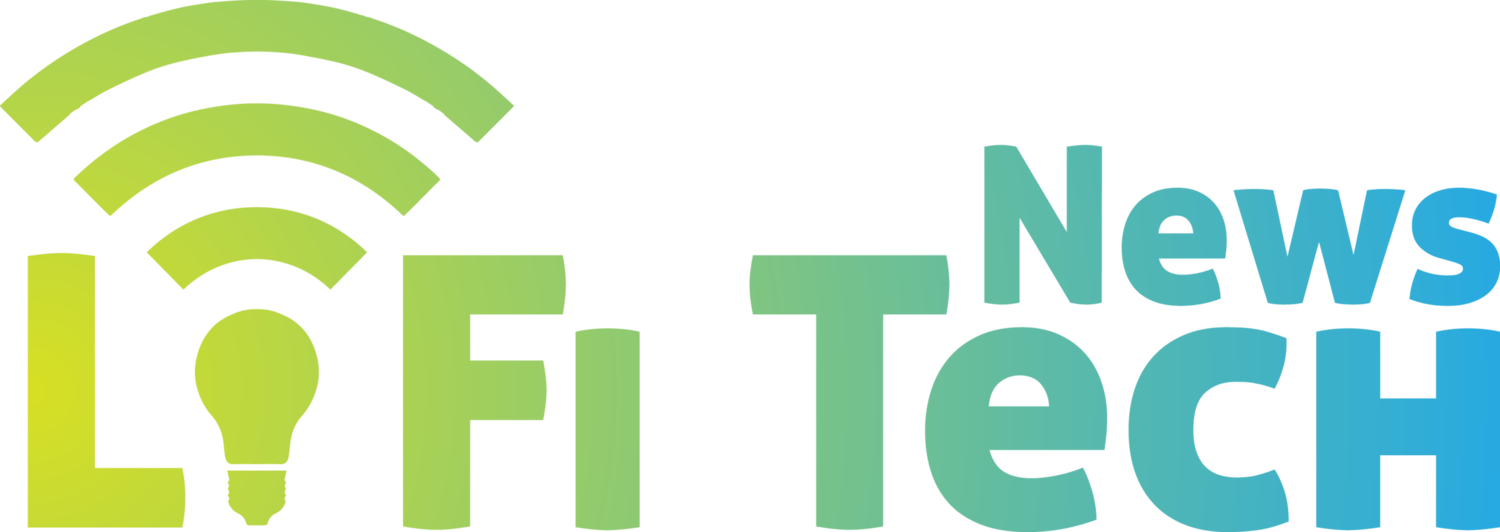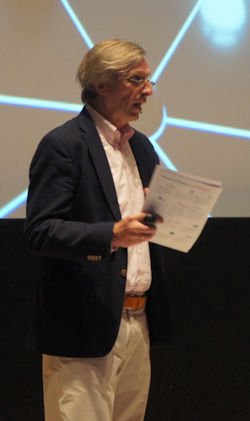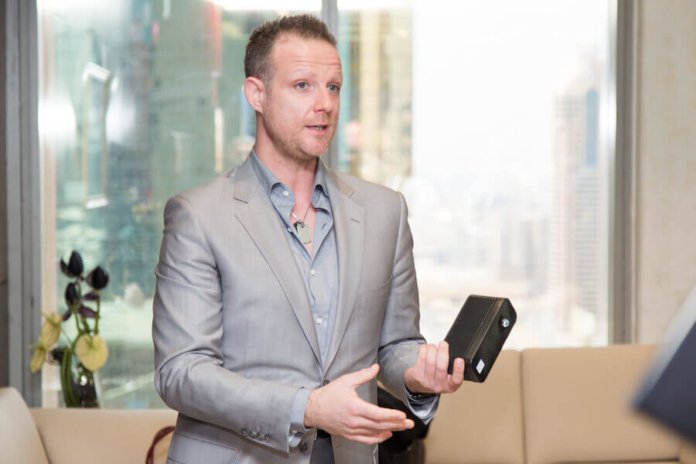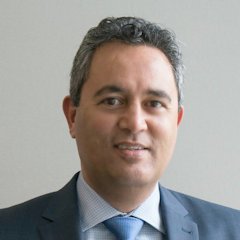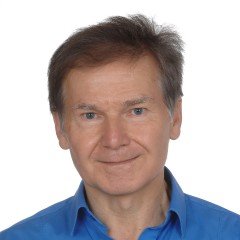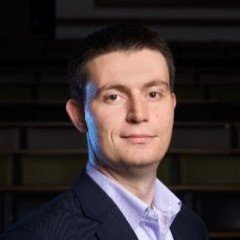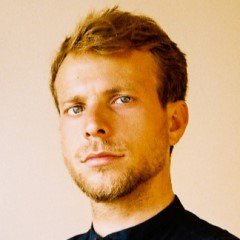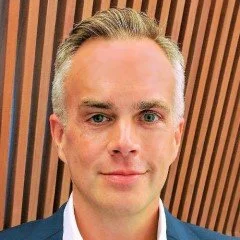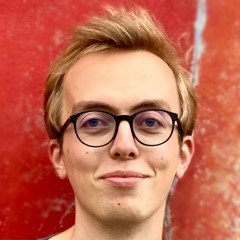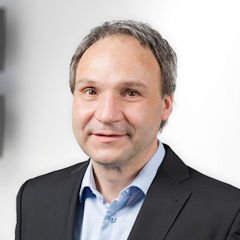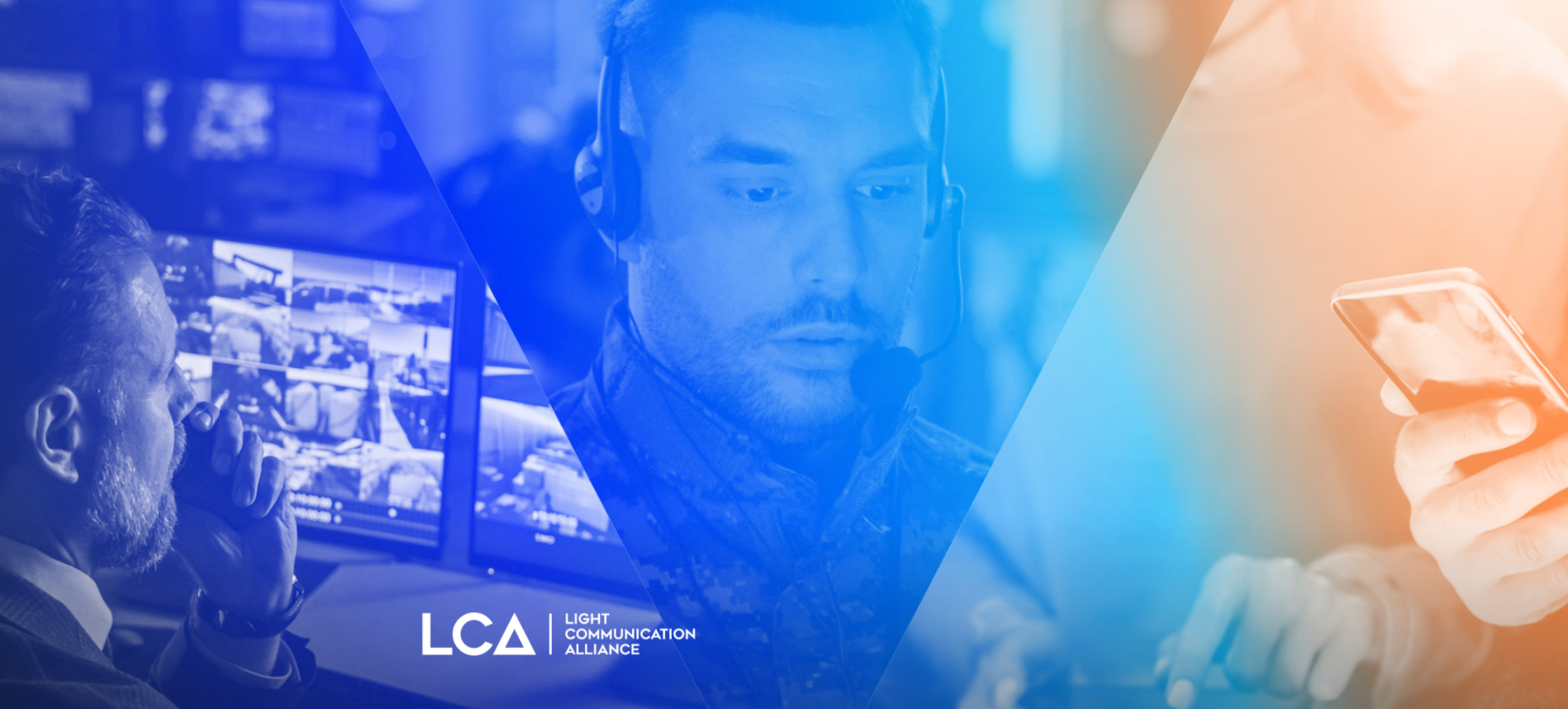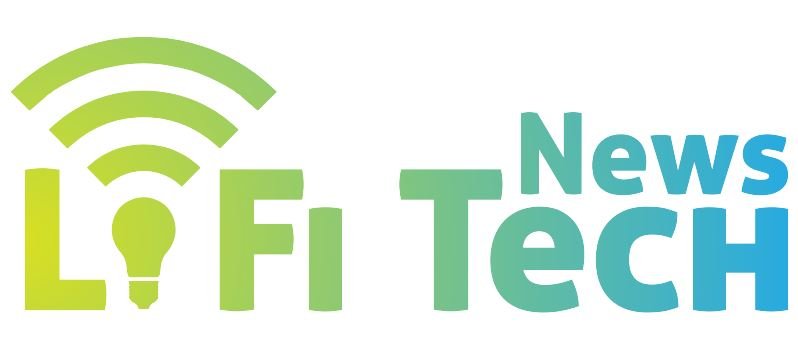Table of Contents
- Global Li-Fi Conference 2022
- The Moderators and Speakers for the Li-Fi Conference 2022 edition
- Pieter Hermans - Moderator
- Richard Bijlard - MODERATOR
- Marc Fleschen - Speaker 1
- Musa Unmehopa - Speaker 2
- Max Riegel - Speaker 3
- professor Harald Haas - Speaker 4
- Marcos Martínez - Speaker 5
- Carmen Mas Machuca - Speaker 6
- Nikola Serafimovski - Speaker 7
- Catherine Lepers - Speaker 8
- Danilo Fattorini - Speaker 9
- Alessandro Pasquali - Speaker 10
- Fathi Abdeldayem - Speaker 11
- Ron Schaeffer - Speaker 12
- Jonathan Oostvogels - Speaker 13
- Sandrine Gihr - Speaker 14
- Gregory Botanes - Speaker 15
- Livia Rosu - Speaker 16
- Volker Jungnickel - Speaker 17
- John Peek - Speaker 18
- Light Communication Alliance
- Founding Members of the LCA
- Venue and registration details
- Partners of Li-Fi Conference 2022 Edition
- Benefits of Attending The Conference
- What is LiFi?
- How does LiFi work?
- LiFi Benefits
- LiFi Applications
- Subscribe to LiFi Tech News
Li-Fi Conference 2022 Edition - Coming Up on Tuesday 28th June 2022 - High Tech Campus Eindhoven/Online, The Netherlands
Last month, we wrote a 10-part article recap series about the ONLINE Li-Fi Conference 2021 held last year in June 2021. The conference was organised by the Jakajima, the global High Tech Conference organiser, and the Light Communications Alliance.
Jakajima, Matchmaker for Innovators in the high tech industry, organises many events, ranging from LiFi Technology industry trends, 3D Printing to the Internet of Things, from Unmanned Cargo Aircraft to Health Tech, from 4D Printing to Photonics and from Vertical Farming to Sustainable Materials.
The online Li-Fi Conference included live presentations from researchers, executives and industry specialists from pureLiFi, Nokia, Signify, Orange, Radiocommunications Agency Netherlands, Velmenni, OLEDCOMM, HomeGrid Forum and Weidmüller Deutschland.
In today's article, we are going to discuss the upcoming and anticipated Li-Fi Conference 2022. The conference is coming up on the 28th June 2022. We will also talk about the moderators, speakers and the companies they work for, the Light Communications Alliance (LCA), the venue and registration details, partners of the Li-Fi Conference event and reasons/benefits for attending the conference.
Global Li-Fi Conference 2022
LiFi is a wireless communication technology which uses light to transmit data and position between devices. The technology is similar to Wi-Fi but uses light to transmit data instead of radiofrequency in terms of its end-use.
Using light to transmit data allows LiFi to offer several advantages, most notably a wider bandwidth channel, the ability to safely function in areas otherwise susceptible to electromagnetic interference (e.g. aircraft cabins, hospitals, military), and offering higher transmission speeds.
It is interesting to realise that lights that illuminate offices, homes, cars, factories, our streets and more locations also can connect us to data and hence power the growing demand for connectivity and speed.
Li-Fi Conference is an annual event held online and in a physical venue where professionals from all over the globe gather together in order to share applications, ideas, LiFi trends, new developments and ways to integrate LiFi into services, both for consumers and professionals.
As stated by JakajimaTV, the following topics that will be covered at the upcoming conference are as followed:
Market Development
Ecosystem
Telecom/datacom (incl. 5G)
ICT
Security (with role from governmental institutions)
Chipset Manufacturers
Electrical Contractors
System Integrators
Applications
Home
Office
Healthcare
Education
Industry 4.0
Mobility (Aviation/Automotive)
Standardisation
The role of startups
Research meets industry
Who should attend:
Business Development, Innovation staff and management of
Telecom operators
ICT / System integrators
Service providers
Hardware manufacturers
Retailers
Electrical Contractors
Real Estate
Industry 4.0
Automotive
Aviation
Chipset Manufacturers
Telecom / datacom (incl. 5G)
Governmental bodies
Regulatory institutions
Investors
Start-Ups
Students
Consumers
Professionals of all industries
LiFi enthusiasts
Tech enthusiasts
The Moderators and Speakers for the Li-Fi Conference 2022 edition
Pieter Hermans and Richard Bijlard will be the two moderators for the Li-Fi Conference 2022 edition. So far, 18 speakers have been confirmed for the upcoming Li-Fi Conference. We will update on any new developments.
Pieter Hermans - Moderator
Photo credit to Jakajima
According to the profile on Jakajima website, Pieter Hermans acquired Jakajima, a Benelux publishing company, and restructured it into a matchmaker for innovators in the high tech industry, ranging from 3D Additive Manufacturing to Internet of Things, from Unmanned Systems to Health Tech, from Photonics to 3D Bioprinting and from Experience Design to Virtual Reality.
As the technology develops itself from atoms to bits and from bits to atoms, traditional boundaries between value chains disappear which offers new business opportunities. Pieter Hermans, a matchmaker for innovators, focuses on these crossovers.
Since July 2021 he is Chairman of the Platform Unmanned Cargo Aircraft, which is an open, non-profit association of member organizations which aims to support the development and deployment of Unmanned Cargo Aircraft, while driving a consistent, focused and concise approach to market education that will highlight the benefits, use cases and deployments of Unmanned Cargo Aircraft (UCA) from the first mile to middle mile and last mile and with small to large cargo implementations.
He has been chairman/moderator of several international conferences and has given many presentations on these crossovers of technology, business and creativity – not to forget enthusiasm and humour.
Richard Bijlard - MODERATOR
Photo credit to Jakajima
After having worked in international marketing and sales for large multinationals as well as for high-tech startups in the electronics- and advanced materials industry for over 20 years, Richard is now offering his experience and networks to help out others. As connector and business coach, he is involved in the European Union EASME project for SMEs, acts as Advisory Committee Member for NWO subsidies and is Chairman of the Board of ‘Brainport Centre for Technology & Law’ (an organisation that facilitates knowledge- and contacts exchange between high-tech entrepreneurs and investors, patent attorneys, lawyers and accountants).
Techno-broker BV
Technobroker BV, owned by Richard Bijlard is focused on connecting various parties in the high-tech playfield. We help companies that provide solutions and look for partners and customers. Techno-broker provides assistance to streamline innovation processes and effectively develop sales channels and ecosystems in high-tech. Activities include business coaching, marketing development and IP protection advice.
Brainport Centre for Technology & Law
Brainport TechLaw exists since 2013 and is a platform where technology and law come together, literally and figuratively speaking. Our goal is to combine, share and ensure specific knowledge in technology and law. This is achieved, among others, by connecting our members – entrepreneurs in (high)tech branches and specialist advisers (including accountants, lawyers, and patent attorneys) – and by organising thematic events.
Marc Fleschen - Speaker 1
Photo credit to Tharawat Magazine
Next to being chairman of the LCA, he is the founder of Zero1 company specialising in optical camera communication. Winner of the French tech startup awards 2017, start-up of the year 2018 by CCI French tech international, Prix du jury 2018 UAE French embassy. Marc Fleschen will do a presentation about The Light Communication Alliance.
Zero.1
Zero.1 is a Hardware and Software provider specialising in Optical Camera Communication founded in 2016. Through its unique driver, any LED can become compatible, a simple app downloadable on the IOS and Android Store will allow cameras of mobiles devices to receive OCC signal, Zero.1 provides Cloud and services associated such as but not limited to, Indoor positioning system, localisation based services, geolocalised information’s, crowd management and data analytics etc.
Musa Unmehopa - Speaker 2
Mr Musa is the Head of Ecosystems and Strategic Alliances for LiFi, at Signify. Prior to joining Philips Lighting in 2013, he worked for Bell Labs, Lucent Technologies, and Alcatel-Lucent. Musa has held senior leadership roles in various standards bodies, trade organizations and industry consortia, including chairman of the Technical Plenary of the Open Mobile Alliance, vice-chairman of the Board of the Zigbee Alliance, and Secretary-General of the Zhaga Consortium. He also served on the boards of The Connected Lighting Alliance, the Emerge Alliance, and the Parlay Group, and is an advisor to several technology start-ups. Author of two technology books, Musa has been an invited keynote speaker and panellist at various industry events. His publications include numerous papers in technical journals and conferences. He holds two patents. Musa received a BSc. and MSc. degree in computer science from Twente University and MBA degrees from TIAS Business School and University of Bradford School of Management.
Musa will deliver a presentation on 'Together we build the LiFi ecosystem'.
Signify
Signify is the new brand name of Philips Lighting. The name change occurred in March 2018 to represent the transformation from an analogue lighting company into digital lighting and Internet of Things (IoT) company. Signify is the world leader in lighting for professionals, consumers and lighting for the Internet of Things. The company provides lighting solutions for professional segments such as automotive, healthcare, horticulture, office, outdoor, phototherapy, petrol stations, solar, purification, schools, fashion, cinema, and more. These lighting solutions include indoor and outdoor luminaires, lamps, electronics, lighting controls, lighting control software, IoT systems and platforms.
Max Riegel - Speaker 3
Maximilian Riegel received his Dipl.-Ing. degree in Electrical Engineering from TU Munich, Germany and is currently responsible for IEEE & Wi-Fi standardization within Nokia. He participates in IEEE 802 and other Wi-Fi related standardization for more than 15 years and led the development of IEEE 802.1CF-2019 specification. He was NWG vice chair in the WiMAX Forum, led the Ethernet over cellular work in IETF 16ng WG, and chaired the OmniRAN SG/TG activities in IEEE 802. He regularly acts as a lecturer for Wi-Fi and as a speaker at technical conferences. Formerly, he held R&D management positions within Siemens Communications and Philips Communication Industry.
Max Riegel will deliver a presentation on 'LiFi Standardization Status and Evolution'.
Nokia
Nokia creates technology that helps the world act together. As a trusted partner for critical networks, Nokia is committed to innovation and technology leadership across mobile, fixed and cloud networks. It creates value with intellectual property and long-term research, led by the award-winning Nokia Bell Labs. Adhering to the highest standards of integrity and security, Nokia helps to build the capabilities needed for a more productive, sustainable and inclusive world. Nokia continues to be a major patent licensor for most large mobile phone vendors. As of 2018, Nokia is the world's third-largest network equipment manufacturer.
The company was viewed with national pride by Finns, as its mobile phone business made it by far the largest worldwide company and brand from Finland.
professor Harald Haas - Speaker 4
Professor Haas received a PhD degree from the University of Edinburgh in 2001. He currently holds the Chair of Mobile Communications at the University of Edinburgh, and is co-founder and Chief Scientific Officer of pureLiFi Ltd as well as the Director of the LiFi Research and Development Center at the University of Edinburgh. His main research interests are in optical wireless communications, hybrid optical wireless and RF communications, spatial modulation, and interference coordination in wireless networks. He first introduced and coined spatial modulation and LiFi. LiFi was listed among the 50 best inventions in TIME Magazine 2011.
Prof. Haas was an invited speaker at TED Global 2011, and his talk: "Wireless Data from Every Light Bulb" has been watched online more than 2.2 million times. He gave a second TED Global lecture in 2015 on the use of solar cells as LiFi data detectors and energy harvesters. This has been viewed online more than 1 million times. Professor Haas holds 31 patents and has more than 30 pending patent applications. He has published 300 conference and journal papers including a paper in Science. He co-authored a book entitled: "Principles of LED Light Communications Towards Networked Li-Fi" published by Cambridge University Press in 2015. Prof. Haas is the editor of IEEE Transactions on Communications and IEEE Journal of Lightwave Technologies. He was co-recipient of recent best paper awards at the IEEE Vehicular Technology Conference (VTC-Fall) in Las Vegas in 2013, and VTC-Spring in Glasgow in 2015. He was co-recipient of the EURASIP Best Paper Award for the Journal on Wireless Communications and Networking in 2015, and co-recipient of the Jack Neubauer Memorial Award of the IEEE Vehicular Technology Society. In 2012, he was the recipient of the prestigious Established Career Fellowship from the EPSRC (Engineering and Physical Sciences Research Council) within Information and Communications Technology in the UK. Prof. Haas is recipient of the Tam Dalyell Prize 2013 awarded by the University of Edinburgh for excellence in engaging the public with science. In 2014, he was selected by EPSRC as one of ten RISE (Recognising Inspirational Scientists and Engineers) Leaders in the UK.
Professor Haas will deliver a presentation on 'Towards Terabit per Second Wireless Networking with Light'.
LiFi Research and Development Centre (LRDC) at The University of Strathclyde / Glasgow
The University of Strathclyde (UStrath) is a leading international technological university. It is one of the UK’s top 20 universities for research intensity according to the Times Higher Education (THE) and it is the first university to receive the THE’s ‘UK University of the Year Award’ twice (2012 and 2019). UStrath is a member of CESAER, the European association of leading specialised and comprehensive universities of science and technology, and it is internationally recognised for its standing in applied research, technological innovation and university-business partnerships.
The LiFi Research and Development Centre (The Centre) is dedicated to accelerating the development of LiFi as a major global industry, through creating a pipeline for innovative ideas, technologies, products and partnerships.
The LiFi R&D Centre conducts internationally leading research in collaboration with, and on behalf of industry. It aims to accelerate society’s adoption of LiFi and emerging wireless technology through engagement with major industrial partners, to fully harness the commercial and innovative potential of LiFi, and to help establish a major new £5 billion ($8.5 billion) LiFi industry by 2018.
The UK based research and development centre was formed in 2013, and stems from research into fundamental communications science begun in 2002 that has now received in excess of £8 million ($13.5 million) of competitively won funding.
By facilitating collaboration between industry, internationally renowned experts from the University of Strathclyde, and other key research institutes around the world, the Centre is taking emerging LiFi technologies through into mainstream applications that will soon begin to impact on many aspects of the modern world. The Centre, with its partners and collaborators, will foster the wide spread market adoption of LiFi technologies.
The Centre continues to drive all aspects of LiFi communication from novel devices, through to the integration of LiFi access points in agile heterogeneous 5G and 6G networks enabled by emerging software defined networking (SDN) infrastructures.
Marcos Martínez - Speaker 5
Marcos Martínez received an M.S. degree in telecommunications engineering from the Polytechnic University of Valencia (Spain). He worked for Alcatel Microelectronics, DS2 and Marvell Semiconductors in the design of high performance embedded systems in automotive, DSL, Optical access and powerline, focusing on R&D activities. In 2017, he joined MaxLinear Inc where he has been leading the standardization activities related to wireline networking and has participated in different standardization groups working on wireline networking (ITU-T Q18/15, BBF, HomeGrid Forum and Gigawire Alliance). Recently, he has been a key contributor to ITU-T G.9991 Recommendation on LiFi transceivers.
About MaxLinear Inc
MaxLinear delivers high-performance broadband and networking semiconductors based on its highly integrated radio frequency analog technology, high-performance optical networking technology and its pioneering MoCA and Direct Broadcast Satellite ODU single-wire technology.
MaxLinear was founded in 2003. The company’s original high performance, radio-frequency receiver products capture and process digital and analog broadband signals for applications including terrestrial, cable and satellite television and DOCSIS broadband. These products include both RF receivers and RF receiver systems-on-chip, or SoCs, which incorporate highly integrated radio system architecture and demodulator technology. The company’s products were based on its pioneering low power, low cost CMOS process technology.
In 2015, the company acquired Entropic, the world leader in semiconductor solutions for the connected home. Entropic pioneered multimedia over coax (MoCA) home networking technology. The company’s technology transforms how traditional broadcast and IP streaming video is seamlessly, reliably, and securely delivered, processed, and distributed into and throughout the home.
MaxLinear also offers optical networking driver and trans-impedance amplifier ICs for 100G / 400G optical data center networks. The devices use advanced technology that cut in half the number of channels needed in optical transmission modules, reducing power consumption, size and cost for 100Gbps and 400Gbps networks.
MaxLinear technology is trusted by leading telephone, cable and satellite operators, set-top box manufacturers, networking equipment providers and consumer technology providers.
Carmen Mas Machuca - Speaker 6
Carmen Mas Machuca (Senior Member,IEEE) received the Dipl.-Ing. degree (master’s) from the Universitat Politècnica de Catalunya, UPC, Spain, in 1995, and the Dr.-Ing. Degree (Ph.D.) from the École Polytechnique Fédérale de Lausanne, EPFL, Switzerland, in 2000. She is currently a Privat Dozent/Adjunct Teaching Professor with the Chair of Communication Networks, Technical University of Munich (TUM), Germany. She has published more than 150 peer-reviewed articles. Her main research interests include techno-economic studies, network planning and resilience, SDN/NFV optimization problems, and next-generation converged access networks.
Carmen will deliver a presentation on 'Techno-economic analysis and planning issues for LiFi solutions'.
Technische Universität München
Technische Universität München (TUM) is one of the top technical universities in Germany and is ranked in the top-50 worldwide (e.g., position 50 in the Shanghai Ranking, position 41 in the Times Higher Education ranking). TUM ranked as the University of Excellence in Germany provides an excellent environment for research and education to more than 40.000 students. TUM has 14 departments focusing on natural sciences, engineering sciences, life and food sciences, medicine, technology-oriented business management and education. The department of Electrical and Computer Engineering hosts 26 chairs covering a wide range of areas and expertise. The Department of Electrical and Computer Engineering, where the Chair of Communication Networks (TUM-LKN) belongs, has 45 professorships and offers 5-degree courses to more than 3.300 students.
Nikola Serafimovski - Speaker 7
Nikola worked with major companies in the area of LiFi technology and commercialisation, leading the creation and cultivation of the LiFi ecosystem, marketing, sales and standardization. His experience with T-Mobile and T-Home in Macedonia focused on mobile network deployment and analysis as well as database app development. Nikola worked for the UK-China Science Bridges project to successfully demonstrate the world’s first practical implementation of the Spatial Modulation MIMO concept. He received a BSc in electrical engineering and computer science and an MSc in communications, systems and electronics, both from Jacobs University Bremen, Germany. Nikola earned his PhD in digital communications and signal processing from the University of Edinburgh.
Nikola will deliver a presentation on 'LiFi in Defence'.
pureLiFi
pureLiFi develops technology for communication networks that integrates data and lighting utility infrastructures. It offers a LiFi enabled device that converts the beam of lights into an electrical signal. The signal is then converted back into data. The company was founded in 2012 and is headquartered in Edinburgh.
pureLiFi demonstrated the next LiFi system for the home at Mobile World Congress (MWC) 2022 in Barcelona. pureLiFi stated that this is the world’s first LiFi ecosystem for the consumer market, named LiFi@Home™.
pureLiFi CEO, Alistair Banham stated the following:
“The door is open for LiFi to fill the gap. LiFi is the key to unlocking the next generation of connected experiences in an ecosystem where WiFi and 5G alone are not enough. What we’ve demonstrated here for the first time is how simple it is to bring LiFi into consumer environments. We’ve done all the hard work to make LiFi easy to integrate and simple to get started.”
The LiFi@Home™ family of LiFi connected experiences is made of a consumer-style downlighter, a smartphone, a smart TV and an AR Headset all connected by LiFi. The LiFi@Home system is powered by an easy to install power line communication (PLC) network backhaul that uses existing electrical cabling to connect everything to the internet. Installing the LiFi@Home™ system is as simple as changing a downlighter.
Adding LiFi technology to a home will not only accommodate the growing demand for connected devices, it will also improve the user experience. LiFi enables more reliable connectivity that significantly improves latency and jitter and does not divide bandwidth. Next-generation experiences such as the metaverse and 8K streaming will be possible for everyone, pureLiFi claimed.
pureLiFi’s demonstration of consumer-ready LiFi products is enabled by their world-leading light antennas which are compatible with the same WiFi basebands that already exist in billions of connected devices today, allowing for easy integration of LiFi technology.
At MWC in Barcelona, pureLiFi CEO Alistair Banham made a direct call to the industry to show leadership beyond using WiFi and 5G. “LiFi is for leaders who want to differentiate and offer their customers the best experience. We are calling on the industry to look beyond ordinary and unleash innovation with LiFi. The next and best in connectivity solutions is ready for the taking. LiFi is ready for you to design into your products and put you at the forefront of the next big wave of technology innovation.”
Catherine Lepers - Speaker 8
Catherine Lepers received the PHD degree (Chaotic Dynamics in Lasers) from University of Lille, France, in 1993. She is Full Professor with the department of Electrical Engineering and Dean for Faculty affairs at Institut Polytechnique de Paris/ Telecom SudParis. She was the Head of the Optics and Photonics Group in her department from 2008 to 2021. Before joining IP Paris/ Telecom SudParis, she was an Associate Professor at University of Lille where she conducted research on Dynamics in Lasers and Photonics. From 2000 to 2008, she performed research on OCDMA in optical communications at IP Paris/ Telecom Paris as associate researcher.
Her present research interests in SAMOVAR Lab. include machine learning for optical networks and visible light communications. She managed projects devoted to home networking, ROADM node evaluation and multilayer network dimensioning. She supervised a MOOC on Optical Access Networks.
She is a full member of the Light Communications Alliance (LCA). She is Deputy Head of the research committee in DIGICOSME Labex. She is a member of the Academic Council from IP Paris.
Telecom SudParis
Telecom SudParis is one of the top French engineering schools of higher education and research that awards engineering degrees in France. It produces engineers with skills in information and telecommunication science and technology, and expertise in economic, social, and environmental fields.
Danilo Fattorini - Speaker 9
Danilo Fattorini is an experienced business developer, critical thinker and charismatic networker, fascinated by the power of companies to shape society and committed to have a positive impact on the world through entrepreneurship. MSc in International Business with a specialisation in Entrepreneurship & SME Management, he has been working for 5 years with several start-ups in the Netherlands, Portugal and Italy, dealing with the development of business plans, management and streamlining of internal processes.
He is currently focused on promoting Li-Fi technology for To Be Srl. They believe Visible Light Communication represents a faster, safer and greener alternative to Wi-Fi and we are excited to explore the advantages of this technology in different markets. Their mantra is “Listen to People, Spread the Solutions”.
To Be Srl
To Be Srl is a young, visionary team, eager to bring space to life through light thanks to Li-Fi.
The company wants to unleash the potential of light, connect things and people in a sustainable way and be a seed of innovation for a better world.
They are developing LiFi solutions to meet the growing demand for data traffic and to drive the transition to a fast, secure and sustainable connection that can be integrated with lighting systems that reduce energy consumption.
Francesco Paolo Russo and Raniero Pani are the co-founders of To Be Srl.
"Through Li-Fi, light no longer just illuminates a space, it brings it to life." (FPRusso)
Alessandro Pasquali - Speaker 10
Alessandro Pasquali was born in 1990 in the Alps of Italy. He studied in Rome and Milano and he spent the last 11 years in Switzerland where he worked at first as High School chemistry and physics professor and then he founded the S-Lux company following his researches that he always conducted in parallel.
He started researches about light transmission when he was 16th years old transmitting informations at just 10 cm of distance. He continued his studies for years and using the same very low power class of LED used in the beginning, he was able to demonstrate for example a transmission by light from Dover Cliffs (England) to Calais (France) across the English Channel for a total free space distance of 33Km. His Company owns different patents and solution on light transmission and photonic applications.
Alessandro will deliver a presentation on 'A vision about future developments in wireless light communication'.
S-Lux GmbH
S-Lux is today focused on the development and selling of specific technologies of light transmission and photonic applications invented by Alessandro Pasquali.
The Compay was reported by Start-Us Insight in the top 5 Worldwide Li-Fi startups impacting the Industry. The Company's activities were reported also by the Swiss Federal office of Telecommunication, Forbes, Focus and trade magazines.
Fathi Abdeldayem - Speaker 11
Mr Abdeldayem started his career at Siemens ICM in Munich Germany as an R&D Engineer, before moving to BenQ and then o2 Germany. He then moved to the automotive industry working for BMW and Audi in the automotive engineering domain. The next step was back to the Telecommunication industry at Telefonica Germany in developing technology roadmaps for products and services working very closely with the business unit to develop the Telefonica Germany portfolio. Managing Tier 1 key vendors such as Apple and Nokia was his next step as a global telecom expert interacting with the other Telefonica Group teams.
Fathi will deliver a presentation on 'LiFi from Operator Perspective'.
du
Since the inception of its business in 2006, du has worked hard to enhance and expand its services in an industry that is at the heart of economic and social transformation. Their aim is to bring people and businesses together is what they do best, by offering mobile and fixed services, broadband connectivity and IPTV services to people, homes and businesses all over the UAE. They are building a telecommunication company by taking connectivity to the next level to fit the future and the people's needs because their customers will always be their main focus. Therefore, we are providing carrier services, a data hub, internet exchange facilities and satellite service for broadcasters.
Ron Schaeffer - Speaker 12
Ron Schaeffer has a proven track record in portfolio management, product management and development in smartphones, connected devices, mobile apps & services, semiconductors and consumer electronics, with global responsibility from start-ups to multinationals. He has also defined, managed & launched some of the world’s first smartphones and is equally adept in both technical and commercial environments. Experience and knowledge include as followed:
Product portfolio planning, product road mapping, development and product lifecycle management
Opportunity analysis and market requirements gathering
Strategy, brand, product and proposition definition
Product and portfolio management consulting and coaching
Business Development; Customer and partner relationship management, including of suppliers, manufacturers/ODMs and mobile network operators
Line management and department building; Business process creation
Benchmarking, competitive intelligence, consumer research
Broad & deep understanding of wireless handset technology, trends & services
Diverse OS, user interface & application layer software experience, including Android
Familiarity with a variety of project management paradigms for both hardware & software, including Agile
Ron will deliver a presentation on 'Market Conditions Pulling LiFi Towards the Consumer'.
Jonathan Oostvogels - Speaker 13
Jonathan Oostvogels is a doctoral researcher at KU Leuven and a member of the imec-DistriNet research group. Jonathan works on the design of next-generation network architectures and techniques for low-latency and high-throughput wireless cyber-physical systems. His work has been featured in several top-tier publications, including both academic and popularising media.
Jonathan will deliver a presentation on 'Symbol-Synchronous Buses: Deterministic, Low-Latency Wireless Mesh Networking with LEDs'.
imec-DistriNet, KU Leuven
The imec-DistriNet research group is part of the Department of Computer Science at the KU Leuven. The general domain of expertise and innovation of DistriNet is the development of open, distributed object support platforms for advanced applications. The research is always application-driven and is often conducted in close collaboration with the industry.
Sandrine Gihr - Speaker 14
With a higher education in business management, Sandrine joined Marc Fleschen in Zero1 in 2015, then took charge of the French subsidiary, Zero1 FR in 2017.
Sandrine will deliver a duo presentation with Gregory Botanes on 'Symbol-Synchronous Buses: Deterministic, Low-Latency Wireless Mesh Networking with LEDs'.
Gregory Botanes - Speaker 15
Situm’s Vice president and CGO since 2015, Gregory has more than 25 years of experience in the Computing industry, both, HW & SW sectors (Microsoft, DIGITAL/HP…), in the Telecommunications and ISPs markets (Vodafone, ONO, The Phone House / The Carphone Warehouse, Deutsch Telekom/YACOM…) and in the Aviation industry.
Gregory will deliver a duo presentation with Sandrine on 'Symbol-Synchronous Buses: Deterministic, Low-Latency Wireless Mesh Networking with LEDs'.
Situm
Situm is one of the main world’s leading providers of technology and positioning systems for wayfinding solutions and indoor staff monitoring.
The company has its origins in the technological research about autonomous robotics carried out by the three founding partners, Víctor Álvarez, Adrián Canedo and Cristina Gamallo. The result was a unique algorithm to position mobiles indoors with high precision and minimal infrastructure. In 2015, Situm was established to commercially employ this technology, thanks to the business model definition by the new partner, Gregory Botanes, and the entity Unirisco.
Nowadays, their multidisciplinary team – formed by PhDs, physicists, software developers and telecommunication engineers – works with leading companies in their sectors to optimize their services. With their indoor technology, they improve the visitor experience in hospitals, shopping malls and airports; they facilitate the transit and assistance to people with reduced mobility in different facilities with high concurrence; they manage security services and cleaning staff or we increase the productivity of human teams and mobile assets in factories.
Their technology has already been deployed in thousands of buildings in more than 70 countries and our solutions are used by leading companies in their sectors, making them an international reference for indoor navigation, guidance, tracking and monitoring solutions.
Livia Rosu - Speaker 16
Livia is a Computer Science engineer with 18 years of business development experience in the telecommunications industry, dedicated to semiconductors and the standardization of revolutionary technologies ranging from Smart Cards to Smart Cities.
Livia joined Marvell Semiconductor, a US-based leading fabless semiconductor company with expertise in microprocessor architecture and digital signal processing, in 2010. At Marvell Livia managed strategic marketing and competitive positioning of G.hn, working closely with system vendors and carriers that require Plug & Play networking capabilities. In 2017 Livia joined MaxLinear, a leading US provider of high-performance radio-frequency and mixed-signal semiconductor solutions for the connected home, wired and wireless infrastructure markets when it acquired Marvell’s G.hn business unit.
Livia has built a strong knowledge of industry associations having served 8 years as Internet Business Development Officer and Head of External Relations for ETSI, the European Telecommunications Standards Institute in France until 2006, as a strategic signatory of 68 Co-operation Agreements with standards development organizations and alliances among which ITU, IPv6 Forum and IETF. Before HomeGrid Forum Livia also acted as Chair of the PSO Protocol Council of ICANN (Internet Corporation for Assigned Names and Numbers) and Member of the Interim Steering Group (ISG) by the EC-POP (European Commission Panel of Participants in Internet Organisation and Management), for the creation of the “Dot EU” Top Level Domain and Member of the ISOC-AC (Internet Society Advisory Council), in charge of open standards and protocols for the Internet administration.
Livia received a Master in Business Administration (MBA) from EDHEC Business School in France in 1999. She holds a Master in Computer Science and Internet Security (M.Sc., 1997) and a Bachelor of Science degree with Honours in Automation Engineering and Network Management (B.Sc., 1996) from the Polytechnic University of Romania with a scholarship award from France. Livia is fluent in 6 languages.
HomeGrid Forum
According to their website, HomeGrid Forum (HGF) is an industry alliance formed to support the development and deployment of a unified coaxial, phone line, powerline, and plastic optical fibre home networking technology called G.hn (Gigabit Home Networking). G.hn technology is based on standards developed by the UN’s International Telecommunications Union – Telecom (ITU-T) standards development organization.
HomeGrid Certification ensures compliance and interoperability (C&I) of silicon and systems through plugfests and rigorous C&I testing. A logo is issued for certified systems’ packaging and documentation of G.hn-based systems. HGF Certification ensures that retail customers and Service Providers have confidence in, and great satisfaction with all HGF G.hn Certified Certified products.
HomeGrid Forum members comprise an eco-system covering all aspects of the technology from Retailers to Service Providers, Utilities to Smart Grid think tanks, System Developers to Test Houses and Silicon Companies.
HomeGrid currently has four workgroups: a Clean Tech/Smart Grid/Smart Energy workgroup focused on in-home energy management and utility Distribution Automation and AMI applications for G.hn, a G.hn Contributions workgroup that continuously works to develop advanced enhancements for wired home networking, a Compliance & Interoperability workgroup, and a Marketing workgroup focused on promoting all HomeGrid Certified Products and technologies.
The purpose of HomeGrid Forum is to:
Lead the work within the ITU-T to continuously expand G.hn, through a sustained effort to improve and extend this advanced home networking technology for any in-home wiring (coaxial cable, phone line, powerline and plastic optical fibre).
Encourage and evangelize the adoption and widespread deployments of G.hn by Service Providers and through Retail channels.
Provide a clear migration path for all legacy wired technologies to G.hn, where coexistence and G.hn’s ability to work over any wire type enables Service Providers to extend the life of their existing network investments while increasing coverage, robustness, and throughput in the home.
Maintain a comprehensive compliance and interoperability program to promote an ecosystem of compliant silicon and interoperable products based on the ITU-T G.hn standards.
Volker Jungnickel - Speaker 17
Volker Jungnickel (M) received doctoral and habilitation degrees in Physics and Communications Engineering from Humboldt University and Technical University in Berlin in 1995 and 2015, respectively. He joined Fraunhofer HHI in 1997 working on optical wireless communication, multiple antenna techniques in mobile networks and new fixed acess network infrastructures. Besides, he serves as Privatdozent at Technical University in Berlin with lectures and supervises Masters and Ph.D. thesis.
Fraunhofer Heinrich Hertz Institute HHI
The Fraunhofer Institute for Telecommunications, Heinrich Hertz Institute, HHI, also known as Fraunhofer HHI or Fraunhofer Heinrich Hertz Institute, is an organisation of the Fraunhofer Society based in Berlin. The institute engages in applied research and development in the fields of physics, electrical engineering and computer sciences.
The Fraunhofer Heinrich Hertz Institute develops mobile and stationary broadband communication networks and multimedia systems. Focal points of independent and contract research conducted by Fraunhofer HHI are photonic components and systems, fiber optic sensor systems, and image signal processing and transmission. Future applications for broadband networks are developed as well. Research in this area focuses on 3D displays, UHD panorama video production, human-machine interaction through gesture control, optical satellite communication and data transmission technologies such as visible light communications.
Fraunhofer Heinrich Hertz Institute HHI is technology partner of the LiFi Conference and will exhibit.
John Peek - Speaker 18
After graduation from Eindhoven University of Technology in 1977, John has taken many positions at Philips (Lighting). In 2015, he retired from the CTO position at Philips Automotive Lighting.
As an R&D professional, working and living in diverse cultures (European countries, the Americas, East Asia), he familiarized with the broad variety of innovation aspects, which – in interdependency – determine whether a new product/service proposition actually makes it in the marketplace.
John Peek joined the start-up (K)SLD Laser as a consultant to support them in growing the company and her business.
KSLD
KYOCERA SLD Laser is pioneering the future of light. As stated on their website, new ideas are being harnessed to realise tomorrow’s product innovations.
The next generation in lighting has arrived, shining brighter and farther than ever before. In the last decade, LED enabled a new generation of lighting that changed everything. Now, LaserLight outshines the limits of LED to deliver safe, high luminance white light from an incredibly small point source. LaserLight doesn’t just offer superior technology, it’s enabling entirely new opportunities.
KYOCERA SLD are commercialising revolutionary semi-polar GaN LaserLight for the next generation of display, automotive, and specialty applications. LaserLight sources are used directly in single color and R-G-B applications, or integrated into laser pumped phosphor architectures.
As an independent spin-off from Soraa Inc, SLD Laser was founded in 2013 by several leading global pioneers in solid state lighting, including Dr. Shuji Nakamura, a 2014 Nobel Laureate in Physics for his groundbreaking work with LEDs, Dr. Steve Denbaars, Dr. James Raring, and Dr. Paul Rudy. Our laser technology incorporates a robust intellectual property portfolio of over 500 patents. SLD Laser was acquired by KYOCERA Corporation and has commenced operations as a Kyocera group company under the name KYOCERA SLD Laser, Inc.
KSLD's DataLight LiFi innovation uses dual-emission visible and infrared LaserLight sources. These sources enable customers to commercialise potent intelligent illumination systems including functionality of spatially dynamic lighting, night vision illumination, accurate sensing and 3D LIDAR, as well as optical power transmission. DataLight engines can be configured for customer specific applications and have exciting potential to be performance optimised using artificial intelligence and machine learning.
The company demonstrated its DataLight innovation for automotive and consumer applications at the last Consumer Electronics Show, Las Vegas in January 2022.
James Raring, CEO of Kyocera SLD Laser, stated that: “We are thrilled to announce KSLD's achievement of world record LiFi data rate of 90 Gbps and our demonstration of this DataLight innovation at CES 2022 in our exhibition booth. To pioneer the future of lighting and wireless connectivity, our ultra-high speed LiFi technology is eye-safe, impervious to ambient lighting, secure, efficient, and RF-free. KSLD is commercialising LiFi solutions for customers in mobility applications, automotive, and undersea, as well as RF-sensitive environments such as airplane cabins, smart factories, healthcare, secure government facilities, and smart cities.”
Light Communication Alliance
The Light Communication Alliance (LCA) is the authority on light communication. The LCA states that they are the most extensive light communications alliance in the world, a recognised leader. They are building demand for light communication through collaboration. As an alliance, they leverage partnerships between industry leaders to validate use cases and build functioning ecosystems. With the aim of ultimately inspiring global investment in light communication.
The LCA is an open, non-profit association of members who aim to promote Light Communications technology with a consistent, focused and concise approach. The LCA highlights the benefits, use cases and timelines for Light Communications adoption. The organisation aligns innovative leaders across the industries that light and communications touches, defining standards for education, communication, and interoperability.
The founding members of the LCA are Nokia, Emirates Integrated Telecommunications Company (du), Liberty Global, Lucibel, pureLiFi, LiFi Research & Development Centre, Velmenni, Zero.1, CEA Leti, and Institut Mines-Télécom.
Light Communication technologies include Light Fidelity (LiFi) and Optical Camera Communications (OCC) both of which have been attracting increased attention over recent years within several industries, such as smart cities and homes, industry 4.0 and manufacturing environments, as well as retail and tourism.
Global Market Insights predicts that the LiFi market will be worth $75 billion by 2025, creating broad, far-reaching opportunities for the related industries to benefit from Visible Light Communications.
Founding Members of the LCA
Nokia
Nokia creates the technology to connect the world. They develop and deliver the industry’s only end-to-end portfolio of network equipment, software, services and licensing that is available globally. Their customers include communications service providers whose combined networks support 6.1 billion subscriptions, as well as enterprises in the private sector and public sector that use their network portfolio to increase productivity and enrich lives.
Through their research teams, including the world-renowned Nokia Bell Labs, they are leading the world to adopt end-to-end 5G networks that are faster, more secure and capable of revolutionizing lives, economies and societies. Nokia adheres to the highest ethical business standards as they create technology with social purpose, quality and integrity.
pureLiFi
pureLiFi is a Light Communications company that was founded by Prof. Harald Haas and Dr Mostafa Afgani in 2012 as a spin out of the University of Edinburgh. pureLiFi offers both LiFi systems and Gigabit LiFi light antennas to OEM’s for integration. The company formed in response to the exponential growth in global demand for wireless bandwidth. pureLiFi has grown its international customer base with more than 130 deployments of LiFi in over 24 countries. The firm has also secured international partnerships with organisations such as Cisco, Wipro and O2 Telefonica.
Zero.1
Zero.1 is a Hardware and Software provider specialising in Optical Camera Communication founded in 2016. Through its unique driver, any LED can become compatible, a simple app downloadable on the IOS and Android Store will allow cameras of mobiles devices to receive OCC signal, Zero.1 provides Cloud and services associated such as but not limited to, Indoor positioning system, localisation based services, geolocalised information’s, crowd management and data analytics etc.
du
Emirates Integrated Telecommunications Company (du) is a vibrant and multiple award-winning telecommunications service provider in the United Arab Emirates serving 9 million individual customers with its mobile, fixed-line, broadband internet, and Home services over its 4G LTE network. du also caters to over 100,000 UAE businesses with its vast range of ICT and managed services.
Velmenni
Velmenni has been working on LiFi Technology for the past 5 years. It has achieved multiple research and development milestones within Optical Wireless Communication including the development of the Optical Wireless Mesh Network. Today, Velmenni’s main focus is on the optimisation of speed, efficiency and seamless connectivity within the LiFi domain. Having held successful runs of LiFi technology in multiple locations, we’re presently conducting pilot projects to utilise bidirectional Light Communication in diverse industrial conditions. The goal remains to integrate LiFi and Wi-Fi to create impeccable, efficient and productive networks.
Lucibel
LUCIBEL is an innovative French group that designs and manufactures in France new generation LED lighting products and solutions. LUCIBEL is also a pioneer in the development and marketing of LiFi, a light internet access solution co-developed with its pureLiFi partner in Scotland.
LiFi Research & Development Centre (LiFi R&D Centre)
The LiFi R&D Centre translates internationally leading fundamental research to high technology readiness levels and conducts research in collaboration with, and on behalf of the industry. It aims to accelerate society’s adoption of LiFi and emerging wireless technology through engagement with major industrial partners, to fully harness the commercial and innovative potential of LiFi, and to help establish a major new LiFi industry. The LiFi R&D Centre includes 40 researchers including three academics.
IMT
Institut Mines-Télécom is a public institution dedicated to higher education and research for innovation in the fields of engineering and digital technology. Always tuned in to the economic world, it combines high academic and scientific legitimacy with close business relations and a unique positioning in 3 major transformations of the 21st century: Digital Affairs, Energy and Ecology, and Industry. Its training and research for innovation are conducted in the Mines and Télécom Graduate Schools under the supervision of the Minister for Industry and Electronic Communications, in two subsidiaries and in institutions that are associate partners or under contract. Institut Mines-Télécom is a founding member of the Industry of the Future Alliance. It has two Carnot labels for the quality of its research partnerships. Every year, around one hundred startup companies leave its incubators.
About Liberty Global
Liberty Global (NASDAQ: LBTYA, LBTYB and LBTYK) is the world’s largest international TV and broadband company, with operations in 10 European countries under the consumer brands Virgin Media, Unitymedia, Telenet and UPC. They invest in the infrastructure and digital platforms that empower our customers to make the most of the video, internet and communications revolution. Their substantial scale and commitment to innovation enable us to develop market-leading products delivered through next-generation networks that connect 21 million customers subscribing to 45 million TV, broadband internet and telephony services. We also serve 6 million mobile subscribers and offer Wi-Fi service through 12 million access points across our footprint.
In addition, Liberty Global owns 50% of VodafoneZiggo, a joint venture in the Netherlands with 4 million customers subscribing to 10 million fixed-line and 5 million mobile services, as well as significant investments in ITV, All3Media, ITI Neovision, Casa Systems, LionsGate, the Formula E racing series and several regional sports networks.
CEA Leti
Leti, a technology research institute at CEA Tech, pioneers micro and nanotechnologies, tailoring differentiating applicative solutions that ensure competitiveness in a wide range of markets. Leti developed a high-speed bi-directional LiFi solution successfully transferred to Luciom, where each LED lamp can connect up to 15 users to the Internet. Leti is also conducting cutting-edge research on LED sources combined with advanced wireless communication processing targeting very high throughput LiFi systems.
leti-cea.com/cea-tech/leti/english
Venue and registration details
This conference will be held Live and Online. The venue will be the High Tech Campus 1, The Strip 5656 AE Eindhoven The Netherlands.
You can also find more information on transportation and accommodation details on the following link:
https://lificonference.com/venue/
Ticket prices are as followed:
Live Standard Rate ticket costs €345,00 (£290)
Online Standard Rate ticket costs €155,00 (£134)
Live Student Rate ticket costs €125 (£107)
Online Student Rate ticket costs €65,00 (£57)
Prices do not include VAT except where stated otherwise.
Online tickets can be bought at the following link:
https://tikcit.com/register/61e002336d7fc4b6745cab83/
Partners of Li-Fi Conference 2022 Edition
Oledcomm, Signify, HomeGrid Forum, Fraunhofer HHI and LiFi Tech News are partners of the upcoming 2022 edition of the LiFi Conference.
OLEDCOMM
Oledcomm is a spin-off from Paris-Saclay University laboratory research who co-invented the Visible Light
Communication in 2005. Following more than a decade of rigorous R&D and passion for innovation, we’ve quickly grown into a LiFi technology leader with global ambitions. We create technology and products to connect people and objects with light. We are a leading ‘Telecom of Light’ company and a fabless supplier of wireless photonic modems and components.
Today, with a growing team, powerful partnerships, an industry focus, and a solid portfolio of LiFi-focused patents and products, we’re setting the pace and shaping the next wave of the technological revolution.
Signify
Signify is the world leader in lighting for professionals, consumers and lighting for the Internet of Things. Their energy-efficient lighting products, systems and services enable their customers to enjoy a superior quality of light, and make people’s lives safer and more comfortable, businesses more productive and cities more livable.
With 2021 sales of EUR 6.9 billion, approximately 37,000 employees and a presence in over 70 countries, Signify is unlocking the extraordinary potential of light for brighter lives and a better world.
LiFi Tech News
LiFi Tech News is a media news platform covering articles, photos, videos and news about LiFi, the next level and revolution in wireless communications. LiFi Tech News's mission is to enlighten individuals and bring awareness of the mechanism, potential, applications and benefits of this wireless communication technology called LiFi. The vision of LiFi Tech News is to become the leading platform for LiFi news from anywhere in the world.
HomeGrid Forum
HomeGrid Forum (HGF) is an industry alliance formed to support the development and deployment of a unified coaxial, phoneline, powerline, and plastic optical fiber home networking technology called G.hn (Gigabit Home Networking). G.hn technology is based on standards developed by the UN’s International Telecommunications Union – Telecom (ITU-T) standards development organization.
HomeGrid Certification ensures compliance and interoperability (C&I) of silicon and systems through plugfests and rigorous C&I testing. A logo is issued for certified systems’ packaging and documentation of G.hn-based systems. HGF Certification ensures that retail customers and Service Providers have confidence in, and great satisfaction with all HGF G.hn Certified Certified products.
Fraunhofer HHI
Innovations for the digital society of the future are the focus of research and development work at the Fraunhofer Institute for Telecommunications, Heinrich Hertz Institute, HHI. In this area, Fraunhofer HHI is a world leader in the development for mobile and optical communication networks and systems as well as processing and coding of video signals.
Benefits of Attending The Conference
1.Learn the existing and latest LiFi trends in the Light and LiFi Industry
Conferences address the main issues and provide in-depth industry news that is relevant to a particular sector. As an attendee, you will benefit from comprehensive knowledge about the latest news in the Light and LiFi industry; where the LiFi trends will go and how to adapt to them in the future or in your business and work activities.
2. discover current research developments
You will learn current and updated research work and development by some leading LiFi companies, Manufacturers, Suppliers and Academic institutions from the Light Communications Alliance. This can give you a deeper insight into some of the behind scenes works and research in regard to LiFi technology.
3. Networking
Events usually include a dedicated time for networking, which attendees can take advantage of to create a connection with other professionals in the industry and to renew contact with those they already know. With the upcoming Li-Fi conference, it is no different when it comes to networking.
4. Learning beyond your field of interest
Attending the conference dramatically can enhance both your professional and personal development, as well as give you tools and skills which you cannot be taught in-house or online. The focused nature of learning at a conference allows you to dig deeper with the understanding of your topic of interest, especially in the field of LiFi technology.
5. listen to different points of view and perspectives from different companies in the light and lifi industry
Attending the conference will give a range of perspectives from different key players in the Light industry in regard to the applications of LiFi technology.
What is LiFi?
LiFi, also known as "Light Fidelity" is a wireless optical networking technology, which uses light-emitting diodes (LEDs) to transmit data. In 2011, professor Harald Haas made a LiFi demonstration at the TED (Technology, Entertainment, Design) Global Talk on Visible Light Communication (VLC).
VLC uses light as a medium to deliver high-speed communication like Wi-Fi and complies with the IEEE standard IEEE 802.15.7. The IEEE 802.15.7 is a high-speed, bidirectional, and fully networked wireless communication technology-based standard similar to Wi-Fi's IEEE 802.11.
How does LiFi work?
LiFi is a high speed, bidirectional, and fully networked wireless communication of data using light. LiFi constitutes of several light bulbs that form a wireless network.
When an electrical current goes through to a LED light bulb, a stream of light (photons) emits from the lamp. LED bulbs are semiconductor devices, which means that the brightness of the light flowing through them can change at extremely high speeds. The signal is sent by modulating the light at different rates. The signal can then be received by a detector that interprets the changes in light intensity (the signal) as data. Also when the LED is ON, you transmit a digital 1, and when it is OFF, you transmit a 0.
LiFi Benefits
The primary benefits of LiFi are as follows:
• Security: Provides entirely secure access. Where there is no light there is no data.
• Safety: Does not produce electromagnetic radiation and does not interfere with existing electronic systems.
• Localisation: Allows localisation due to the small coverage area of LiFi access point - localisation can be used for very precise asset tracking.
• Data density: Provides ubiquitous high-speed wireless access that offers substantially greater data density (data rate per unit area) than RF through high bandwidth reuse.
Credit to Oledcomm
LiFi Applications
LiFi can be used for so many applications and the list is increasing every year. You can read our updated list of Li-Fi applications at the following link:
Credit to pureLiFi
In conclusion, if you are also interested to hear more information about the OWNII Coin or enquire about LiFi devices such as the LiFiMax and Trulifi, you can contact us through our chatbot or by sending an email through our contact us form. If you enjoyed this post and would like to hear more updates about LiFi technology, subscribe to our newsletter. Don’t forget to subscribe to our social media accounts. You can also join our Telegram group about LiFi technology on this link:
https://t.me/joinchat/FMzOmsEKyJFrU6Af
